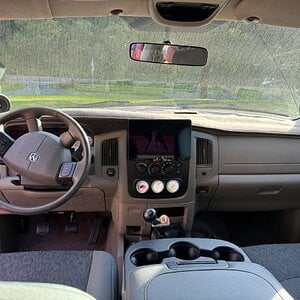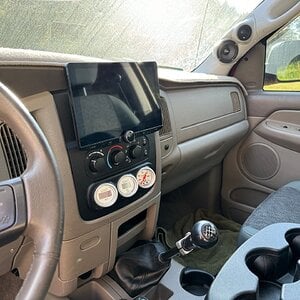Lower preamp voltages don't cause the final amplifier to work harder. They cause the gain to be higher. In simple terms, if I have an amp that produces 10 volts and I have a 1 volt preamp signal, my gain is a factor of ten. If I raise that preamp signal to 2 volts, my gain is a factor of 5. My output voltage doesn't change and the reason why it doesn't is because my amp is only capable of amplifying any signal it receives up to a 10 volt maximum.
Now if I take my 10 volt amplifier and 2 volt preamp signal and set the gain as if I had a 1 volt signal, I'll still only have 10 volts of output. But what I will introduce into the equation is distortion. Assuming you know what a sine wave looks like... the peaks of the upper and lower crests of that sine wave in my amp are 5 volts above and below reference, for a peak to peak voltage of 10. And when my gain is set correctly, there is a nice, even crest on both peaks. But when I raise my gain factor, those peaks become compressed and flatten out because I'm asking my amp to raise the amplitude of those peaks above its ceiling. That is clipping or, distortion, and it is the leading cause of death among speakers. It is also the reason why the DMM method of gain setting is not reliable.
DMMs measure RMS (or close to it) and RMS isn't where distortion occurs. Moreover, a head unit volume setting of 75% may or may not be distorted, depending on the quality of its preamp and the source it is playing. Those are two more potential entry points for distortion and again, a DMM cannot see them.
I got it,.. honestly, understood all of it. I do know what a Sine wave looks like,.. and with my research and online classes I've learned the patterns of the wave.. How, let's just say on the headunit (I'll have the 12v from the battery (again a generalization.. I know voltages differ) -- The middle of the "rails" would be 6v,.. the bottom of the sine wave 0v (ground), and the top crest +12v. -- So take that middle of the rail in the headunit at 6volts.. and apply 6vp/sqrt(2) = 4.2 Volts, thus this would be the 4v Signal coming from the pre-out(s) (Again, I know this voltage isn't going to be this perfect theoretical 4.2v) -- It goes into the Amp which then , well, amplify's this voltage and so on.
Now, if DMM's were as easy as I make it sound to dial in a system,.. then there wouldn't be O-scopes and other equipment to adjust a system from the amp to EQ's , crossovers, et al.
That said,.. If I buy an amp with some headroom. Let's say I need 100watts RMS (as the speaker is rated (and it's a quality speaker) ).. and the amp I purchase is a quality amp that can push 150watts on that channel,.. That leaves some decent headroom (and the way I see it.. a little room for error, given I'll be dialing in with a DMM). So in this example,.. if I set this headunit
AVH-P4100DVD - In-Dash Double-DIN DVD Multimedia AV Receiver with 7" Widescreen Display | Pioneer Electronics USA Which is the headunit I have installed to 75% (some say go 80-90%.. most say 75%).. volume,.. set bass/treble to 0/zero and I suppose set the Parabolic EQ flat? -- Then have the amp gain on zero to start. Put in 1khz Sine wave tone off a CD (or usb stick) that plays for 5 minutes straight.. and go to the amp positive terminal, stick the DMM on the positive terminal,.. and slowly move up the gain for this channel(s) until my DMM reads 20v on the nose,.. And I'm obviously listening at the same time,.. and no distortion is audible,.. Then perhaps I put in a clean song.. (I know music //content.invisioncic.com/y282845/emoticons/smile.gif.1ebc41e1811405b213edfc4622c41e27.gif ) -- and listen closely to it,.. That should be a reasonably safe way to dial in the amp given I don't have the O-scope or other such tools, no?
Then for the sub I'll repeat process, but play a 40hz sine wave .. And adjust the sub channel(s) gain for voltage for 4ohms at Subs RMS rating -- Let's just use 100watts RMS on an 8" sub for ease of math, and coincidentally it would be the same voltage rating as the front speaker(s),.. to 20.00v on the DMM,.
That's the only way I know how to do it without several hundred to several thousand dollar equipment that would obviously be foolish for me to purchase. I'd love to have a scope where I can watch the Wave in real time.. to ensure the peaks and troughs don't flatten out (clip).
I've heard people tell me that going to the "trouble" of using a DMM and doing what I just described as being a waste of time.. to set everything where it distorts then back down just slightly and you are done.
In my opinion,.. spending 10 minutes or so adjusting voltage playing a tone that's right for the speaker type (be it a mid/high/ or sub) and having a DMM on the positive terminal and taking my time adjusting the gain from zero up to voltage is not a waste of time,.. nor difficult. Why chance it? Why not dial it in the best you can with the tools and knowledge you have?
Aside from having the O-scope or other tools needed to really see what is going on,.. I am left with little choice other than to bring the car to a shop that does have these tools (which I'm willing to bet quite a few don't even have them.. and adjust by ear, or at best with a DMM.. but that's a guess) and tell them, I need my amp dialed in please.. and pay them $100 or whatever fee they would charge.
I agree with you! I understand, granted at an early stage of learning these principles, the dynamics going on and why using just voltage readings doesn't guarantee me "Safety" or even being at the right gain for my needs -- But, am I wrong in the broad generalization that purchasing a/an
Quality amp with say 50% headroom (or more) over the RMS rating of the
Quality speakers gives me a better chance of dialing it in using the DMM without introducing distortion and/or clipping into the equation?
You obviously know the science of this quite well, and are used to doing it the proper/best way possible -- It shows by your responses, and you being the OWNER of Audio Anarchy //content.invisioncic.com/y282845/emoticons/wink.gif.608e3ea05f1a9f98611af0861652f8fb.gif -- However, I am trying to do things "right" the best way I can with what I have available to me. I also know just because X percent of people dial in their amp gains by ear, or at best with a DMM (some maybe not even really knowing what they are doing or why).. doesn't mean that because they do it this way that so can I, and be trouble free.
I just feel fairly confident in buying a quality amp that has SOME headroom in it,.. with quality components and proper passive crossovers, and a headunit that I linked above that from what I've read in it's specs puts out a great, clean, 4v signal (It's not the best in the world.. but it's certainly mid range I would say) -- That dialing it in with the DMM with the tones I mentioned should produce a safe environment for my setup.
If not, let me know. This is a bit odd, cause I am not overthinking this part -- I am solid and confident in purchasing the components as mentioned and using the method I explained,.. and you are informing me.. "Hey not so fast.. !" //content.invisioncic.com/y282845/emoticons/biggrin.gif.d71a5d36fcbab170f2364c9f2e3946cb.gif
You are 'somewhat' close to me.. as I am in Birmingham, AL -- but it's still a 6+ hour drive. If you were say 2 hours away, I'd say screw all this and come to your place and let you help me pick out everything and have your employees install it all. Unfortunately you are nearly 7 hours away, so best I can do is take your advice.
Thanks for all the help,


